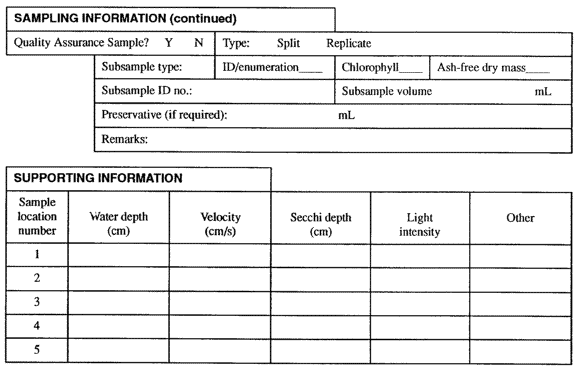
Samples for identification and enumeration of algae (ID samples) should be preserved by adding full strength buffered formalin to constitute a 3- to 5-percent concentration of preservative in the periphyton sample. Buffered formalin is prepared by dissol ving 20 g sodium borate in 1 L of formalin (37-percent formaldehyde solution). The volume of preservative used should be indicated on the sample container and on the field data sheet. Following preservation, a label is affixed to the sample container; the samples are transported and stored in boxes or containers that prevent exposure to sunlight.
Formalin is an excellent preservative; however, caution should be exercised in its use because it is a known carcinogen (U.S. Environmental Protection Agency, 1981). Formalin is poisonous if ingested, and exposure to small amounts can create such symptoms as a burning sensation in the eyes and nose, watering eyes, headaches, and a sore throat. Working with formalin should be done only in well-ventilated areas. Skin can become sensitized to formalin exposure, resulting in skin rashes. Any direct skin contact with formalin should be avoided by wearing rubber gloves. If formalin does accidentally contact the skin or eyes, the affected area should be washed immediately with water. Buffered formalin is properly discarded only according to Federal, State, and local guidelines.